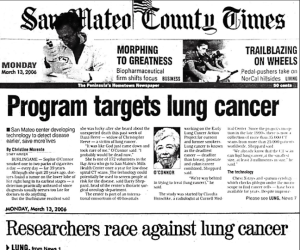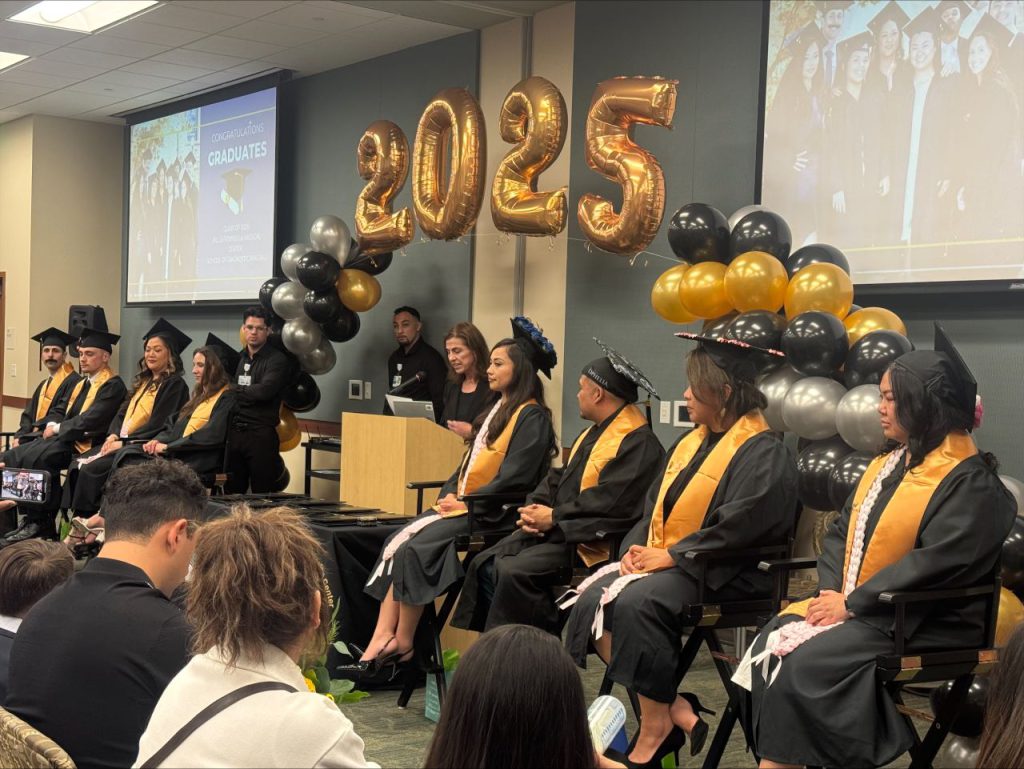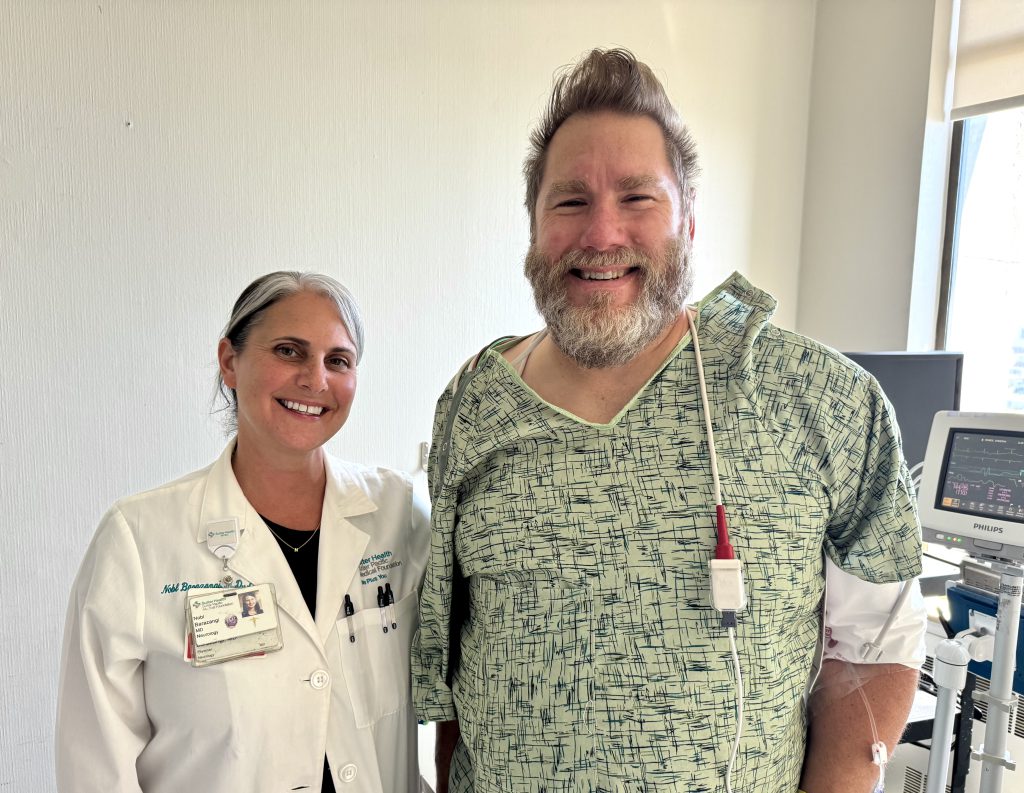From its history as the first hospital in the Bay Area to offer early detection, to its investment in the latest technology, Sutter’s Mills-Peninsula Medical Center has kept lung cancer care at the forefront for the past 20 years. With new, state-of-the-art equipment at their fingertips, doctors and department leaders recently gathered to celebrate advances in the field and emphasize the continued importance of routine screening.
New Robotic Helper
Sutter’s Mills-Peninsula Medical Center is one of four Sutter hospitals1 to receive the new, Ion robotic bronchoscopy platform by Intuitive Surgical, which allows doctors to perform minimally invasive biopsies of suspected lung cancer.
This tool, which uses ultrathin shape sensing catheters, offers physicians greater access to the lung compared to the traditional needle biopsy method. It also carries significantly less risk of lung collapse, injury or other complications from the procedure.
“With this new technology we expect to successfully biopsy nodules in the lung that were previously too difficult to reach,” said Dr. Alexander Zider, pulmonologist with Sutter Health. “This capability will allow us to provide patients with more definitive diagnoses and facilitate more precise treatment plans.”
During the biopsy procedure, known as bronchoscopy, physicians will use the robot’s controller to navigate a catheter, or thin tube, through a patient’s mouth to the suspicious lung lesion. The catheter is then locked in place before doctors pass a special biopsy needle through it to collect tissue from the mass or nodule. This tissue is then analyzed to determine if it is cancerous and if it is, assign a grade.
“Today, if a person’s nodule is inaccessible by minimally invasive methods, they may be subjected to surgery or be advised to follow a ‘wait and see’ approach,” said Dr. Zider. “But with the equipment’s reach, stability and precision we hope to provide more patients with a prompt and accurate diagnosis.”
Time saved by avoiding repeat procedures and follow-up visits for monitoring should speed-up both the diagnostic process and subsequent treatment decisions and could lead to better outcomes. But all these steps are preceded by initial detection of a lesion, something that Sutter’s Mills-Peninsula Medical Center has emphasized for over two decades.
Revolutionary Research
In 2003, the Dorothy Schneider Cancer Center at the San Mateo campus of Sutter’s Mills-Peninsula Medical Center was the first site in the Bay Area, and the sole community hospital, to offer access to a clinical trial testing if computed tomography scans, with a reduced dose of radiation, could detect lung cancer at Stage 1 or 2. At the time, screening was already successful at catching breast cancer earlier, when it is easier to treat, but lung cancer detection lagged behind.
 Researchers knew that low-dose CT scans could spot very small lung lesions, but benign scars could look like tumors, so the trial was limited to people who were at risk for lung cancer based on a history of cigarette smoking.
Researchers knew that low-dose CT scans could spot very small lung lesions, but benign scars could look like tumors, so the trial was limited to people who were at risk for lung cancer based on a history of cigarette smoking.
The trial screened a total of 390 people and 18 were found to have lung cancer. Three-quarters of those were diagnosed at Stage 1, which was associated with an 85% survival likelihood at the time. In the unscreened population the results were eerily opposite. Three-quarters of lung cancers were diagnosed at Stage 3 or 4 which is associated with survival rates of 15% or less.
This trial set the stage for others, which eventually led to the screening recommendations that today encourage 50 to 80 year olds, with a 20 pack-year smoking history or greater, to receive an annual low-dose CT scan.
Read more about Sutter’s lung nodule screening program.
“I am filled with profound gratitude for the patient pioneers from this trial, alongside the visionary physicians and care teams who led the charge and forever transformed patient care,” said Sutter’s Mills-Peninsula Medical Center CEO, Darian Harris, MHA. “Lives were changed in the course of this trial and many more have been saved since by the screening programs and smoking cessation support that it inspired. Twenty years later, Mills-Peninsula Medical Center remains at the forefront of innovation, poised to elevate lung cancer care once more with the Ion robotic bronchoscopy platform and our journey of excellence certainly doesn’t stop here.”
The hospital’s role as a trailblazer has been made possible, in part, thanks to generous donations from the community. Donors helped fund Sutter’s participation in the 2003 clinical trial and have helped the hospital purchase equipment that provides the full continuum of state-of-the-art care for lung cancer patients today.
Philanthropic gifts contributed to the hospital’s investment in a da Vinci surgical robot, also made by Intuitive surgical, in 2017 and a second da Vinci in 2023. These devices allow doctors to perform minimally invasive lung, gynecological and prostate surgery and can be used in gastrointestinal, cardiac, or head and neck surgeries.
To learn more about how you can make an immediate and lasting impact on patient care, through charitable giving, click here.
- Sutter hospitals that have (or will) receive the Ion for Bronchoscopy are: Sutter’s Mills-Peninsula Medical Center, Sutter’s California Pacific Medical Center Van Ness Campus, Sutter Medical Center Sacramento and Sutter Roseville Medical Center.





